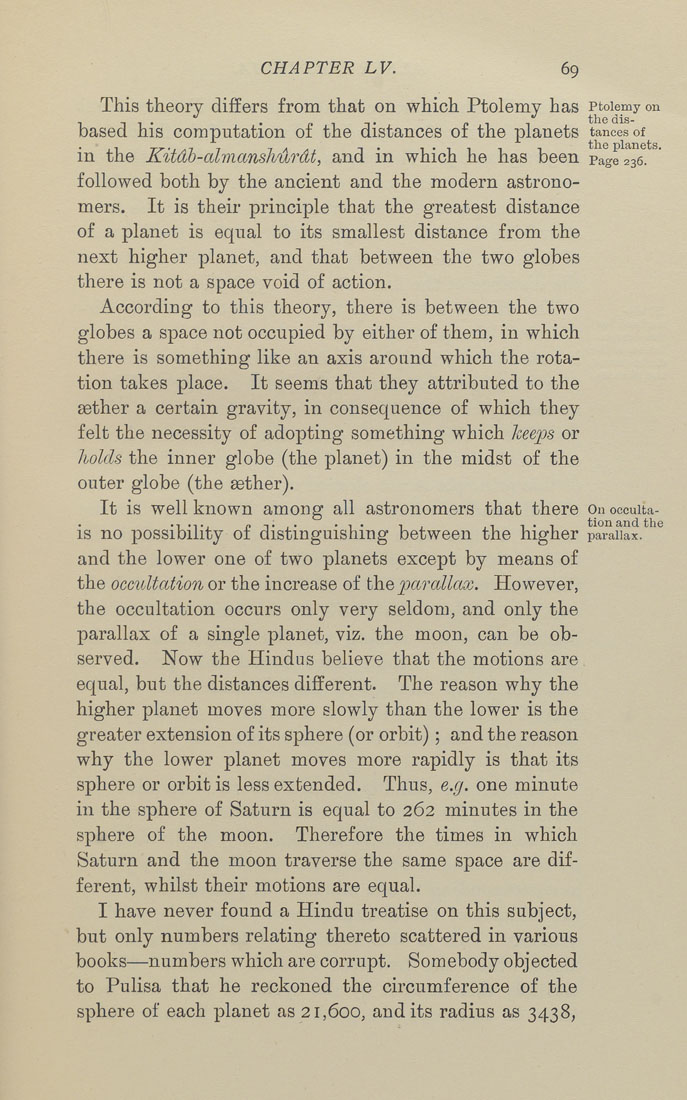Bīrūnī, Muḥammad ibn Aḥmad, Alberuni's India (v. 2)
(London : Kegan Paul, Trench, Trübner & Co., 1910.)
|
||
|
|
|
|
| Page 69 |

CHAPTER LV. 69 This theory differs from that on which Ptolemy has Ptoiemy on based his computation of the distances of the planets tancesof in the Kitdb-ctlmctnshurdt, and in which he has been page 236. " followed both by the ancient and the modern astrono¬ mers. It is their principle that the greatest distance of a planet is equal to its smallest distance from the next higher planet, and that between the two globes there is not a space void of action. According to this theory, there is between the two globes a space not occupied by either of them, in which there is something like an axis around which the rota¬ tion takes place. It seems that they attributed to the aether a certain gravity, in consequence of which they felt the necessity of adopting something which keep)s or holds the inner globe (the planet) in the midst of the outer globe (the sether). It is well known among all astronomers that there On occuita- is no possibility of distinguishing between the higher parallax. and the lower one of two planets except by means of the occultation or the increase of ih.e parallctx. However, the occultation occurs only very seldom, and only the parallax of a single planet, viz. the moon, can be ob¬ served. Now the Hindus believe that the motions are equal, but the distances different. The reason why the higher planet moves more slowly than the lower is the greater extension of its sphere (or orbit); and the reason why the lower planet moves more rapidly is that its sphere or orbit is less extended. Thus, e.g. one minute in the sphere of Saturn is equal to 262 minutes in the sphere of the moon. Therefore the times in which Saturn and the moon traverse the same space are dif¬ ferent, whilst their motions are equal. I have never found a Hindu treatise on this subject, but only numbers relating thereto scattered in various books—numbers which are corrupt. Somebody objected to Pulisa that he reckoned the circumference of the sphere of each planet as 21,600, audits radius as 3438, |
| Page 69 |







